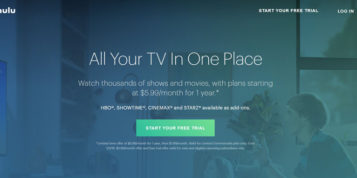The English Football League (EFL) recently announced that free Wi-Fi, for a particular selection of official apps, will be made available at Championship, League One and League Two stadiums from next season. But why? The availability of free Wi-Fi will certainly be welcomed by those fans who have experienced frustration with overloaded mobile networks at half-time, when trying to check the scores or send tweets from the match. Yet increasingly, the provision of free Wi-Fi by brands is less about avoiding overloaded mobile networks, and more of a move to drive loyalty and engagement amongst consumers. In this case, football fans.
The provision of free Wi-Fi for consumers isn’t a new phenomenon and with the EFL announcing its move toward enabling a large number of connected stadia in the UK, it’s important to look deeper and understand how both brands and fans can benefit. By expanding the ‘digital match day experience’ to the UK’s Football League, and not just larger stadia like Wembley, spectators will be provided with a connected and immersive experience.
The fact is, we live in a Wi-Fi first society. On match days, when the 3G / 4G network gets quickly saturated with requests, those selfies, videos and pictures cannot be shared – tainting the spectator experience. Yet, not only does free and secure Wi-Fi solve these network bandwidth issues, it will also allow clubs to serve tailored content to spectators; and engage with fans on a level perhaps they have been unable to achieve without Wi-Fi connectivity.
The need to get inside the mind of the consumer is certainly not a new thing for brands – but has now been joined with a need to also get inside the mobile device. As technology becomes increasingly sophisticated and accessible, those able to tap into data derived from real-time behaviour are making significant strides in accelerating loyalty with fans and consumers alike. The wide availability of Wi-Fi is an intensely disruptive tool for brands; consumers are tied to their smartphones 24/7 and increasingly expect to be able to use their devices wherever and whenever they are. This may be at mass sports events where the atmosphere alone is intensely shareable, but also increasingly ‘in store’, where consumers can converge with brands as well as receive perks for showing support for a brand, such as discounts for using the brand’s mobile app, for example.
Wi-Fi as a value add
In fact, free and secure Wi-Fi connectivity is being offered by more and more brands as a customer benefit to boost brand affiliation. Increasingly, we’re seeing brands offer access to global Wi-Fi networks as a premium service across multiple sectors. For example, HP is offering free global Wi-Fi to add value to its laptop and tablet customers. Luxury fashion brands are also offering the same to their premium customers to reward loyalty and increase positive sentiment amongst consumers.
Wi-Fi provides another key touch point between consumers and their favourite brands, enabling the capture of consumer insight and behaviour, which can be funnelled back into a brand’s sales and marketing strategy. It could also be used to drive tailored offers or content to people, depending where they are in world. For instance, a retail brand may decide to send an offer to every person that logs onto Wi-Fi hotspots within 500 metres of a store.
Ultimately, it’s clear that sports clubs and businesses in general are seeing the huge potential Wi-Fi has in cultivating positive consumer sentiment toward brands. Consumers want connectivity, in fact for most it’s no longer a want, rather a fundamental need. Providing Wi-Fi in a stadium or a store is a good first step, but by providing it everywhere and not limiting users to what they can access, brands will have the opportunity to gain a huge amount of loyalty and valuable data that can help them better engage with customers.





